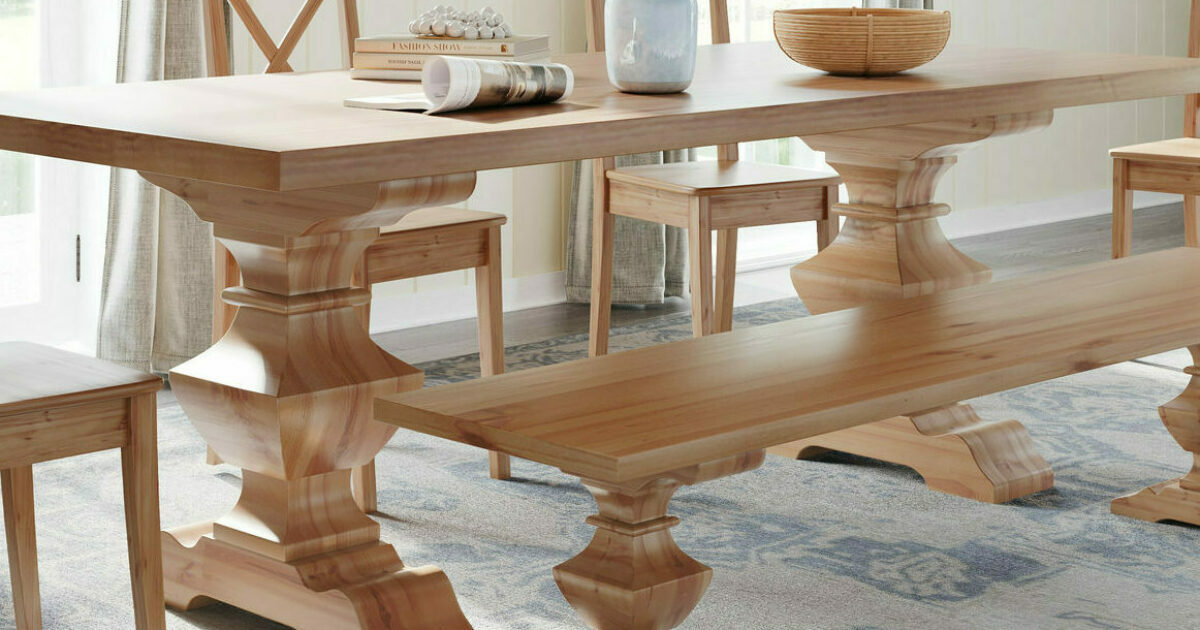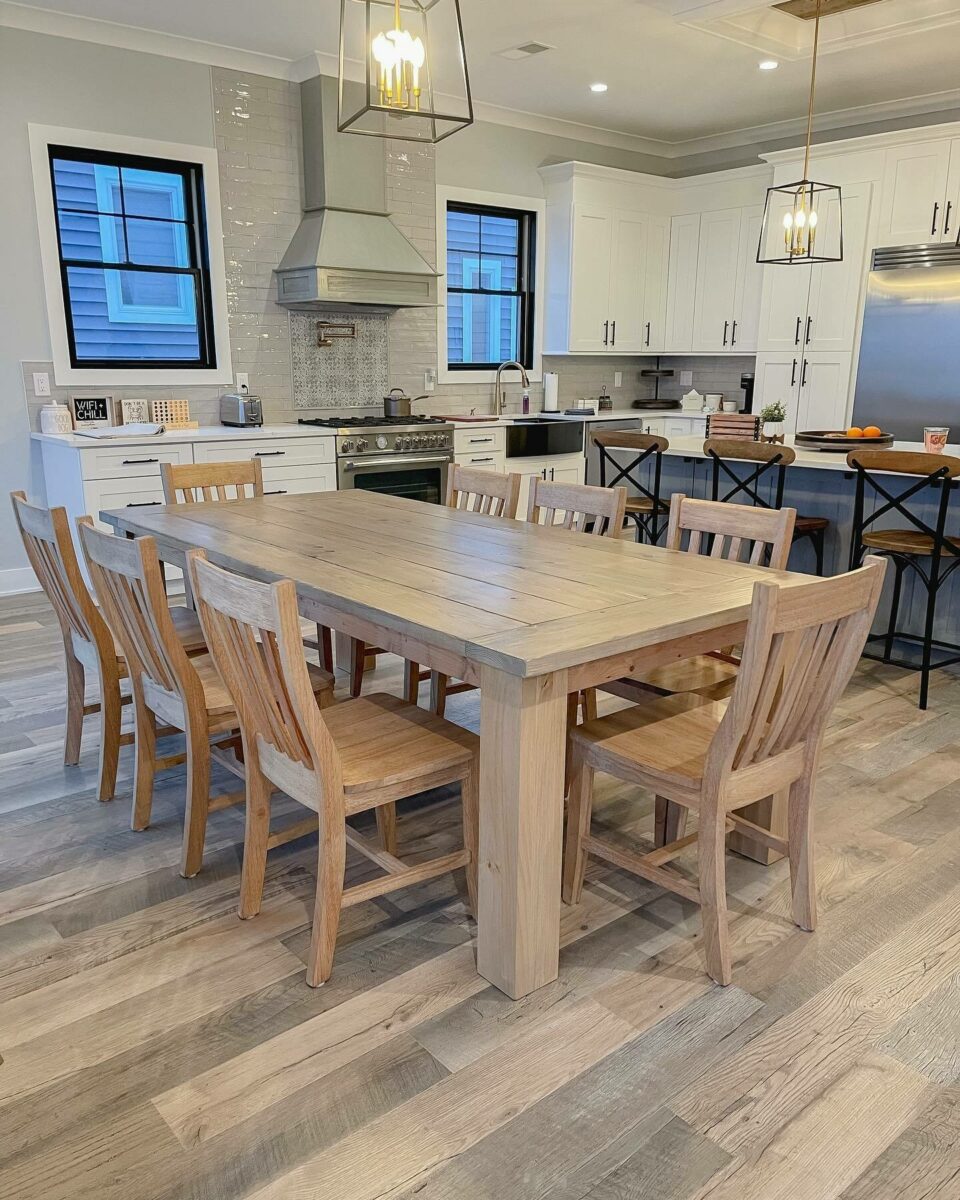Add a Rustic Touch to Your Table with Standard Dining Table Legs Wood
Add a Rustic Touch to Your Table with Standard Dining Table Legs Wood
Blog Article
What to Take Into Consideration When Choosing Dining Table Legs Timber for Your Home.
When selecting timber for eating table legs, a number of crucial elements warrant cautious factor to consider to make sure both functionality and aesthetic allure. The sort of timber picked can significantly influence the table's longevity, stability, and total style, while the maintenance needs might affect lasting functionality. In addition, the interaction of grain patterns and color with existing home furnishings can create a natural design. Comprehending these components is necessary, yet many neglect the critical facet of monetary restraints. As we explore these considerations additionally, the effects of your choices might expose unexpected obstacles and possibilities.

Relevance of Wood Type
When picking dining table legs, the selection of timber kind plays a critical role in determining both aesthetic appeals and toughness. Various wood types use differing degrees of stamina, weight, and resistance to put on, which can substantially affect the capability and durability of the table.
Conversely, softer timbers like pine or poplar, while much more affordable, might not provide the same level of sturdiness and may require more frequent upkeep or substitute. The timber type additionally affects the table's capacity to sustain environmental elements such as humidity and temperature variations. The option of wood can affect the ease of finishing and discoloring, which can be essential for achieving the desired look.
Visual Factors To Consider
The visual charm of dining table legs significantly adds to the general visual of the eating space. Dining Table Legs Wood. When choosing timber for dining table legs, the grain pattern, color, and surface are essential aspects that can detract or enhance from the room's style. Different wood kinds show varying colors and appearances; as an example, oak provides a traditional look with prominent grain, while walnut offers an abundant, dark beauty
Furthermore, the shape of the legs plays a critical duty in defining the table's character. Streamlined, minimalist legs can develop a contemporary feeling, while a lot more elaborate, turned legs stimulate typical beauty. The design of the legs need to harmonize with existing furniture and the total motif of the room, whether it be rustic, modern-day, or transitional.
It is likewise important to consider just how the legs engage with other furnishings pieces, consisting of chairs and sideboards. A natural layout not only boosts the dining experience yet additionally contributes to the home's general aesthetic comprehensibility. Eventually, the selection of table legs must be a thoughtful decision that shows personal preference while ensuring aesthetic harmony within the room.

Sturdiness and Stability
Sturdiness and security are vital variables in the choice of table legs, as they directly influence the long life and safety of the furniture. When picking wood for eating table legs, one need to take into consideration the inherent properties of various wood types. Hardwoods, such as cherry, maple, and oak, are typically preferred for their strength and resistance to put on, making them suitable for high-traffic eating areas.
In addition to the kind of wood, the building and construction technique also plays a considerable duty in the general stability of the table. Legs that are solidly created, either via conventional joinery techniques or contemporary design techniques, will offer superior assistance and avoid tottering. It is vital to examine the density and design of the legs; thicker legs are normally more steady and can endure greater weight.
Furthermore, the ecological conditions in which the dining table will be utilized can influence toughness. Timber that has been properly treated for dampness resistance will execute better in humid environments. Inevitably, choosing the best combination of sturdy timber and secure building will certainly ensure that your table continues to be a risk-free and functional focal point in your home for several years to find.
Maintenance Demands
Picking dining table legs made from sturdy timber is simply the beginning; understanding upkeep demands is equally crucial to preserve their look and performance. Various wood kinds need differing levels of care, so it is necessary to know what is required for your particular choice.
Routine cleansing is basic; use a soft, moist towel to get rid of dust and particles. Prevent harsh chemicals that can damage the surface. For timber coatings like varnish or lacquer, periodic polishing with furnishings wax can enhance luster and provide a safety layer against scratches.
Preventative procedures are crucial (Dining Table visite site Legs Wood). Use placemats and rollercoasters to avoid straight call with hot or wet products, which can warp or tarnish the timber. Additionally, think about positioning felt pads under the legs to avoid scrapes on your floor covering and reduce endure the timber
Moisture control is another significant aspect; keeping a secure environment helps to avoid warping and cracking. Take into consideration making use of a humidifier or dehumidifier as necessary. if your dining area is prone to changes in temperature level and look at this web-site moisture.
Budget and Cost Factors
When intending to buy eating table legs, recognizing budget and price factors is essential to make an informed choice. The type of wood picked for the legs considerably affects the general rate.
Labor and craftsmanship additionally play a pivotal function in the general expense. Handmade or artisan-crafted legs may bring a premium cost tag, mirroring the ability and time purchased their development. It's vital to examine the balance in between high quality and cost; investing more upfront can bring about a longer-lasting item that needs less maintenance with time.
Final Thought
In summary, picking the proper timber for eating table legs requires careful factor to consider of numerous variables, including timber type, visual charm, upkeep, durability, and budget plan restrictions. The choice of woods such as oak and maple can boost both stamina and aesthetic allure, while softer woods may be a lot more affordable however much less long-lasting. Inevitably, a knowledgeable decision concerning product option will certainly add to the overall performance and long life of the table, guaranteeing a beneficial financial investment for the home.
When picking wood for dining table legs, several vital factors require careful consideration to guarantee both functionality and aesthetic allure.When picking eating table legs, the option Look At This of wood type plays an important function in determining both looks and toughness. When choosing wood for dining table legs, the grain pattern, color, and coating are pivotal elements that can take away or boost from the space's layout. When choosing timber for dining table legs, one should take into consideration the integral residential or commercial properties of different wood kinds.In recap, selecting the proper wood for eating table legs necessitates mindful consideration of different aspects, including wood kind, aesthetic charm, longevity, budget, and maintenance constraints.
Report this page